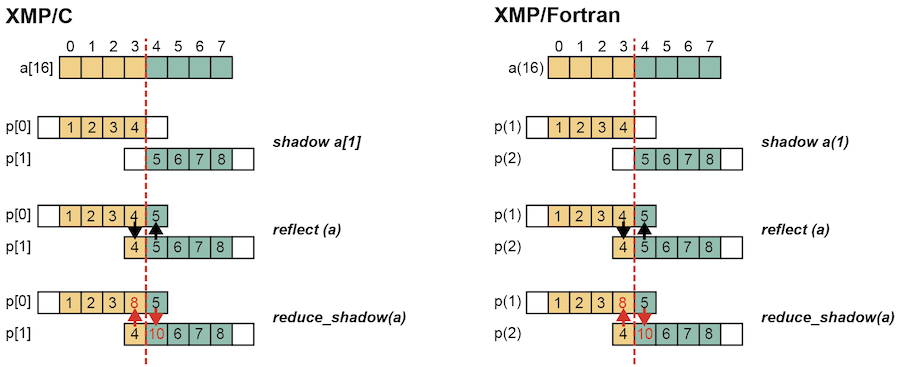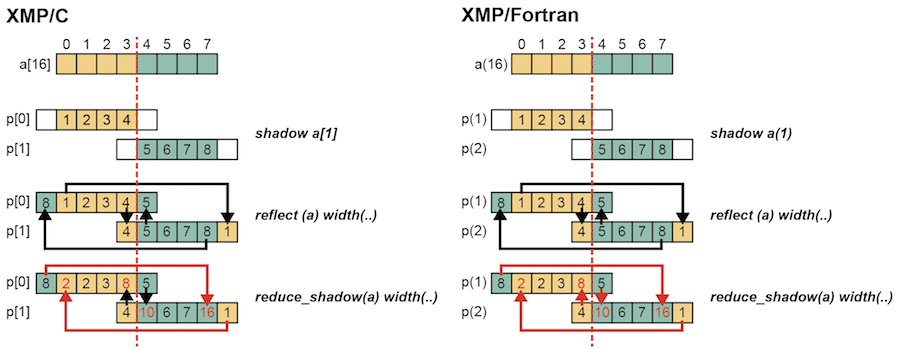19. reduce_shadow construct¶
The reduce_shadow directive adds the value of the shadow to the value of the source element.
- XMP/C program
#pragma xmp nodes p[2]
#pragma xmp template t[8]
#pragma xmp distribute t[block] onto p
int a[8];
#pragma xmp align a[i] with t[i]
#pragma xmp shadow a[1]
:
#pragma xmp loop on t[i]
for(int i=0;i<8;i++)
a[i] = i+1;
#pragma xmp reflect (a)
#pragma xmp reduce_shadow (a)
- XMP/Fortran program
!$xmp nodes p(2)
!$xmp template t(8)
!$xmp distribute t(block) onto p
integer a(8)
!$xmp align a(i) with t(i)
!$xmp shadow a(1)
!$xmp loop on t(i)
do i=1, 8
a(i) = i
enddo
!$xmp reflect (a)
!$xmp reduce_shadow (a)
The shadow directive adds one shadow to the distributed array a of each node. Next, the reflect directive will update shadow between neighborhood nodes. Finally, the reduce_shadow directive adds the value of the shadow to the value of the source element.
In XMP/C, a[3] of p[0] has a value of 8, and a[4] of p[1] has a value of 10. Similarly, in XMP/Fortran, a(4) of p(1) has a value of 8, and a(5) of p(2) has a value of 10.

You can add the periodic modifier to the width clause to execute periodic region updates.
- XMP/C program
#pragma xmp reflect (a) width(/periodic/1)
#pragma xmp reduce_shadow (a) width(/periodic/1)
- XMP/Fortran program
!$xmp reflect (a) width(/periodic/1)
!$xmp reduce_shadow (a) width(/periodic/1)

In addition to the first example, in XMP/C, a[0] of p[0] has a value of 2, and a[7] of p[1] has a value of 16. Similarly, in XMP/Fortran, a(1) in p(1) has a value of 2, and a(8) in p(2) has a value of 16.